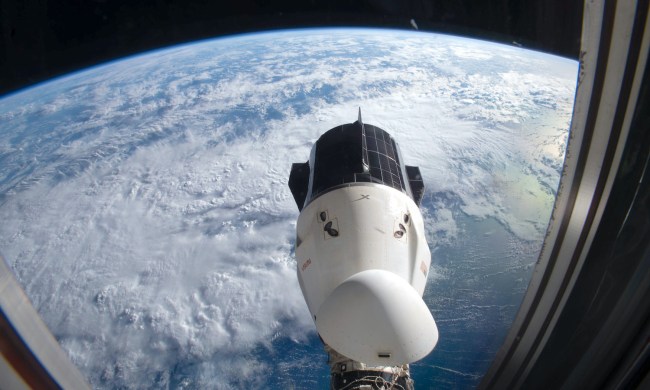SpaceX will launch the AMOS-17 satellite into orbit using its Falcon 9 rocket on Wednesday, and you can watch the event via livestream.
The rocket will take off at approximately 3:53 p.m. PT from the Cape Canaveral Air Force Station’s Space Launch Complex 40 in Florida. You can watch the launch for free in the player above starting about 15 minutes before the launch, or roughly 3:40 p.m. PT. The launch could happen later — SpaceX has set a launch window of about 90 minutes.
AMOS-17 is an advanced communications satellite owned by the Israeli-owned company, Spacecom. It will provide broadband over Africa, the Middle East, and Europe, with the goal of increasing internet access for Africa in particular. SpaceX said in a press release that AMOS-17 is expected to remain in operation for at least 20 years. The hope is for the AMOS-17 to reach the highest possible orbit over central Africa.
Originally scheduled for Saturday, Aug. 3, the launch was postponed due to a valve issue that was found on the rocket on Aug. 1, according to Space.com. Hopefully, there won’t be any further delays in the launch, thought the forecast for the area later today says there could be a 40% chance of scattered thunderstorms.
The AMOS-17 weighs in at a hefty 6,500 kg.(14,330 lbs.). Because it will take so much energy to get the satellite into orbit, the booster used for this mission won’t land vertically. Instead, SpaceX hopes to recover what remains of the booster after it falls back to Earth.
SpaceX’s most recent launch was its launch rocket known as Starhopper on July 26. Starhopper is the prototype rocket for the company’s Starship, which SpaceX hopes to eventually be used as a commercial spacecraft that will be able to take off and land again, like an airplane.
The next SpaceX launch will be on Sept. 30 for the SXM-7 rocket. The location for this launch is still to be determined.
There could be more frequent rocket launches in SpaceX’s future because of the new partnership with NASA that was announced on July 31. As part of the new partnership, SpaceX will work with Kennedy Space Center in Florida in the advancement of the technology needed to vertically land large rockets on the surface of the moon.



